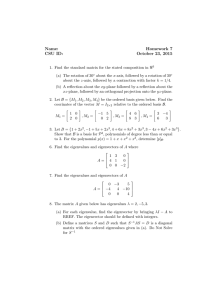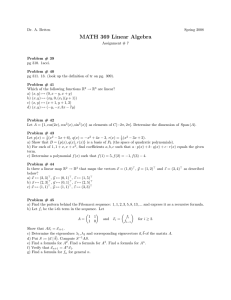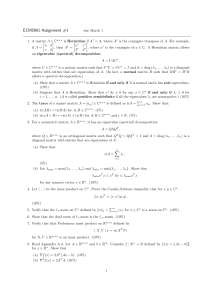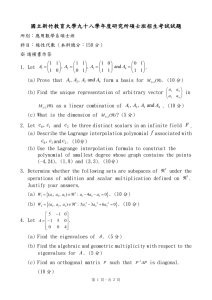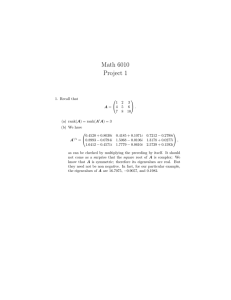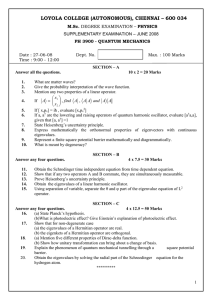Homework 3; due Thursday, Oct. ... 1. Generalize t’Hooft’s theorem to integrals ... matrices.
advertisement
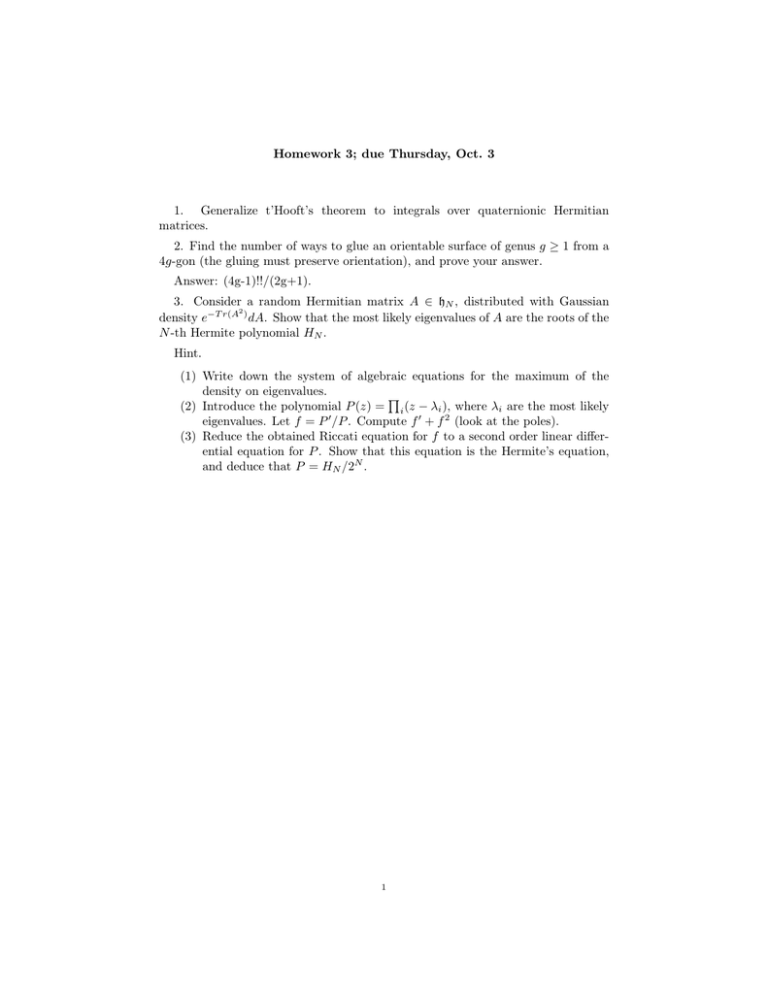
Homework 3; due Thursday, Oct. 3 1. Generalize t’Hooft’s theorem to integrals over quaternionic Hermitian matrices. 2. Find the number of ways to glue an orientable surface of genus g ≥ 1 from a 4g-gon (the gluing must preserve orientation), and prove your answer. Answer: (4g-1)!!/(2g+1). 3. Consider a random Hermitian matrix A ∈ hN , distributed with Gaussian 2 density e−T r(A ) dA. Show that the most likely eigenvalues of A are the roots of the N -th Hermite polynomial HN . Hint. (1) Write down the system of algebraic equations for the maximum of the density on eigenvalues. � (2) Introduce the polynomial P (z) = i (z − λi ), where λi are the most likely eigenvalues. Let f = P /P . Compute f + f 2 (look at the poles). (3) Reduce the obtained Riccati equation for f to a second order linear differential equation for P . Show that this equation is the Hermite’s equation, and deduce that P = HN /2N . 1



